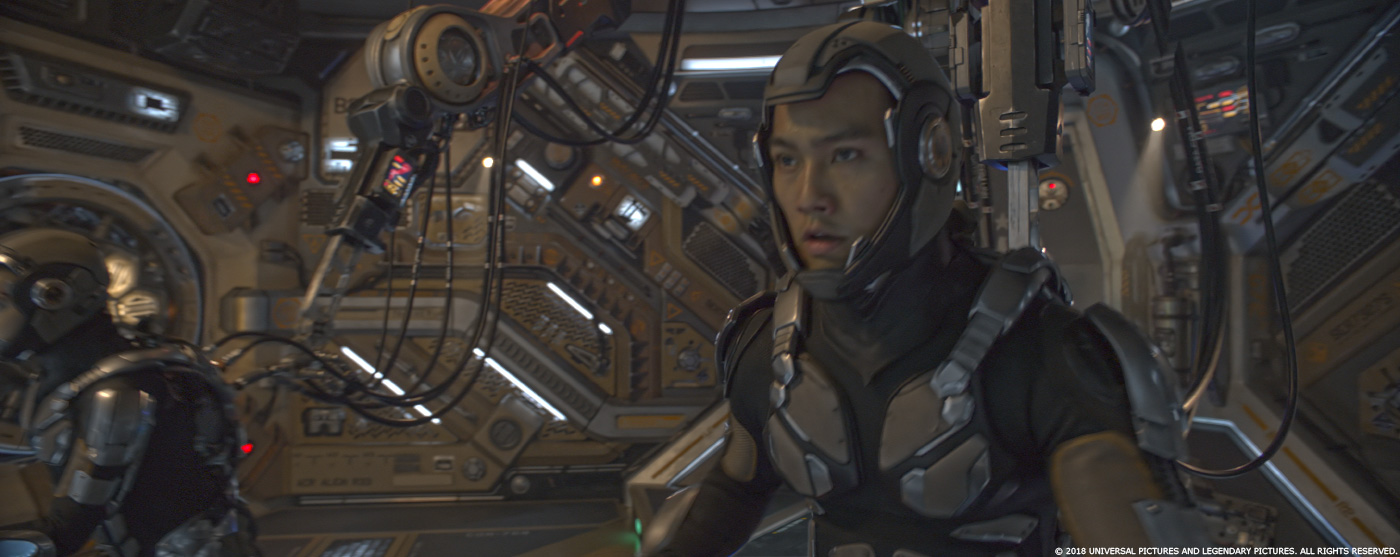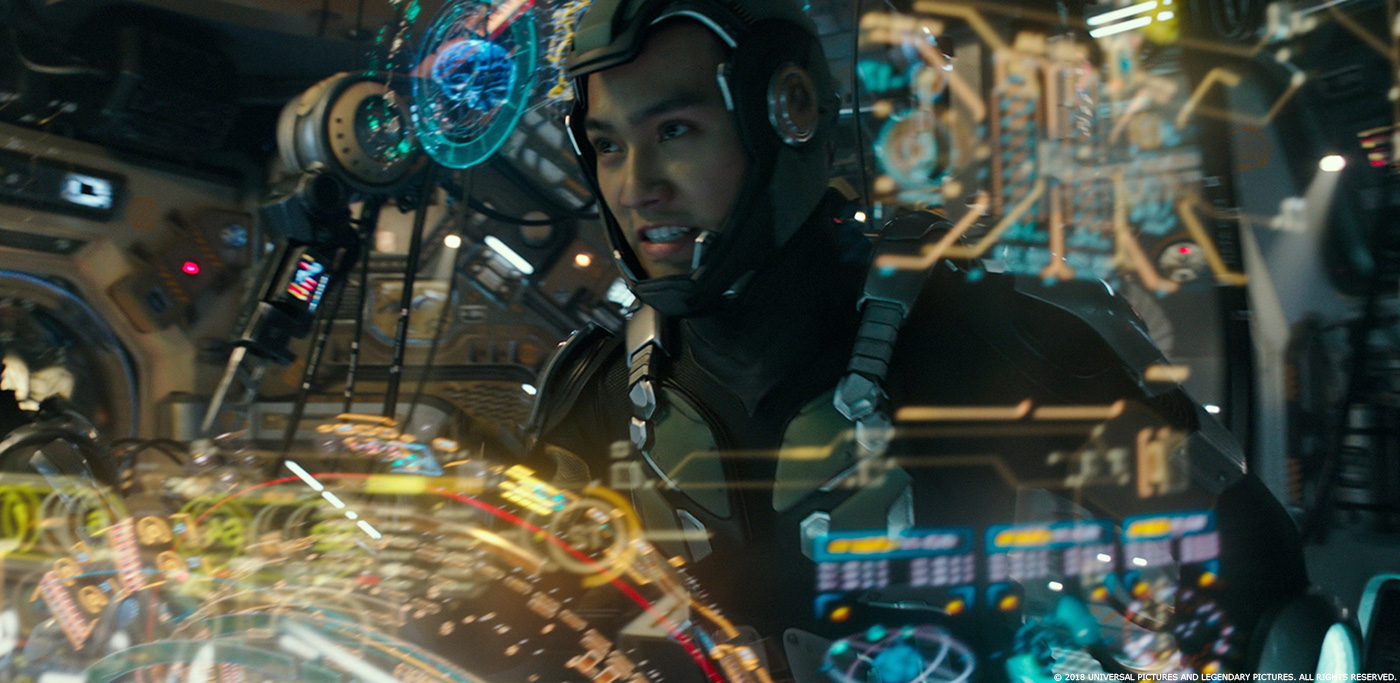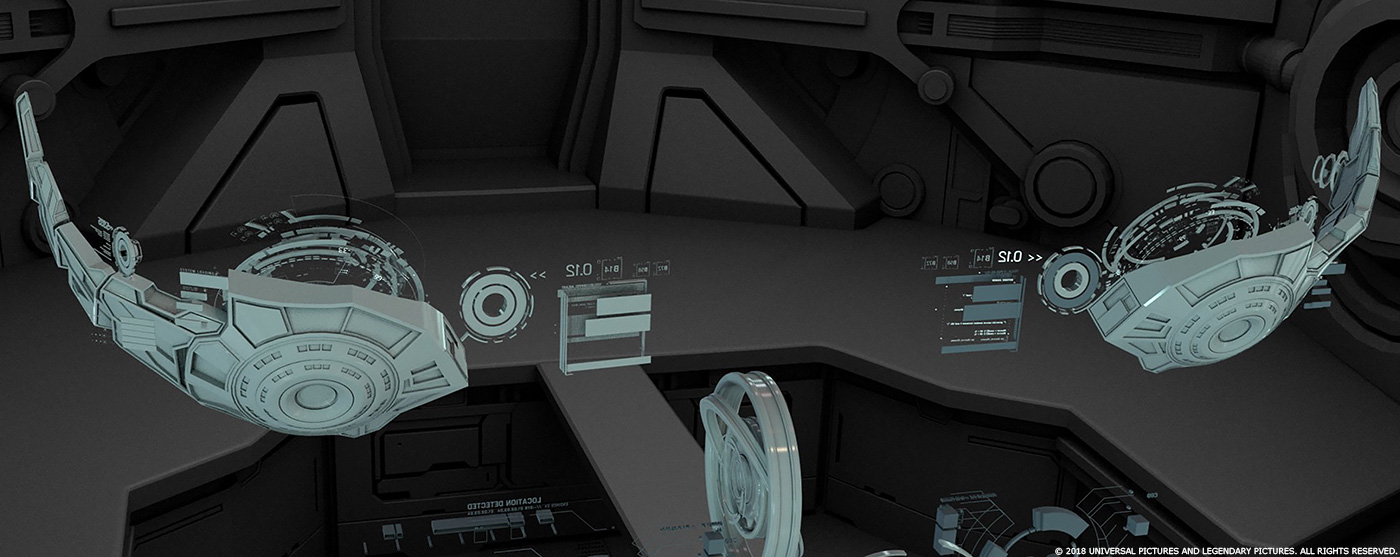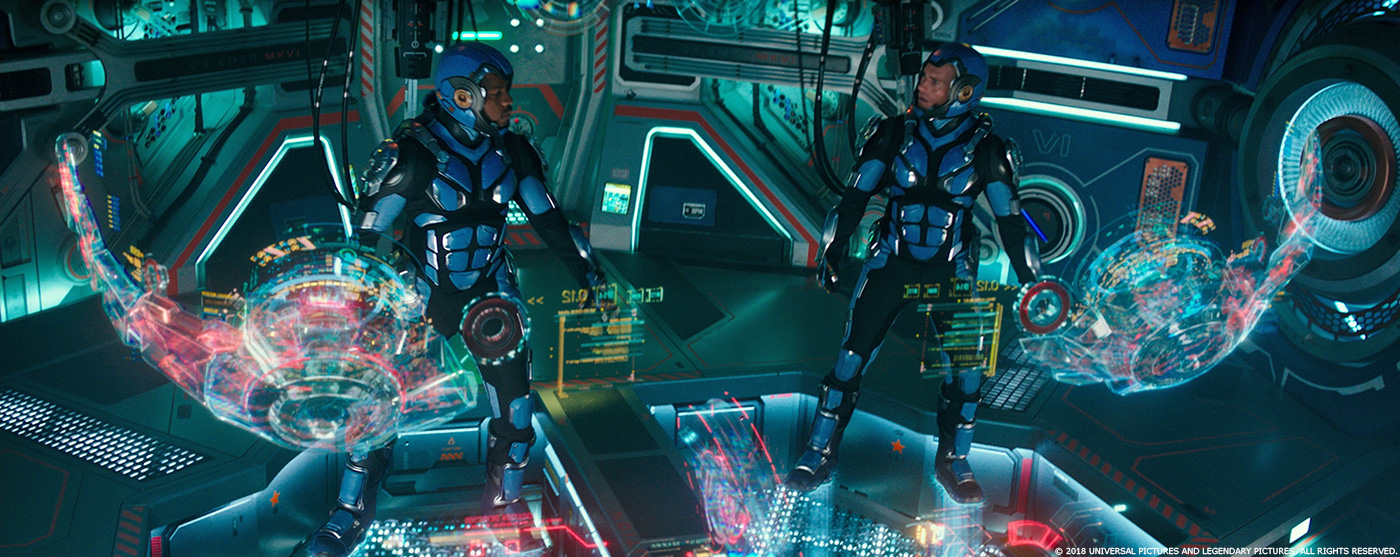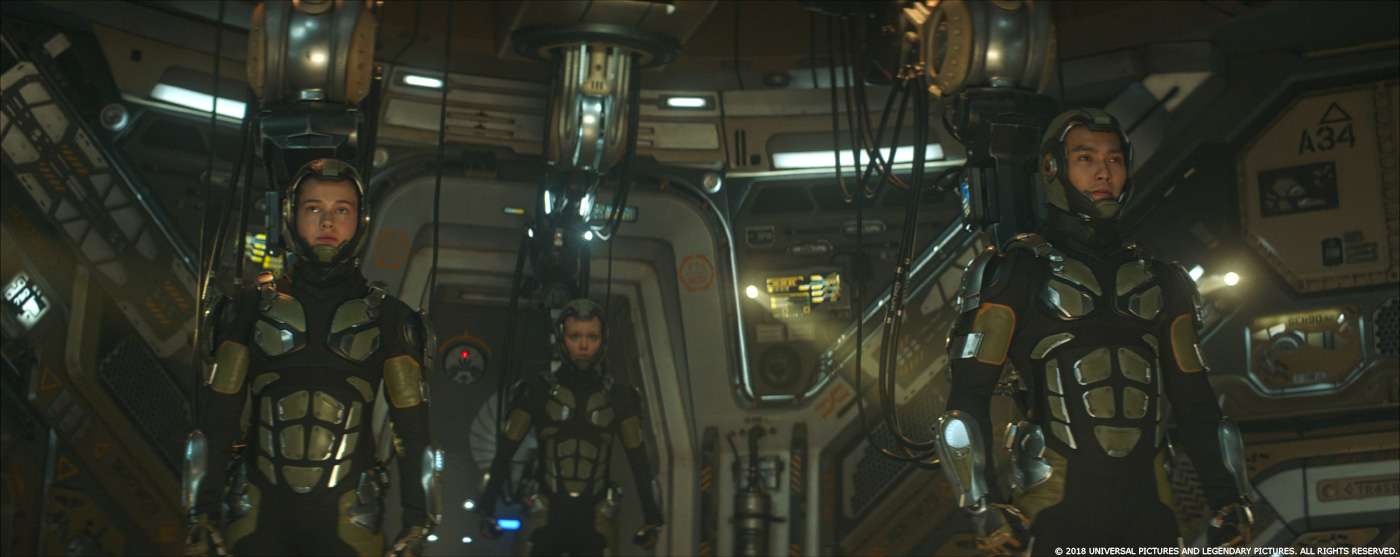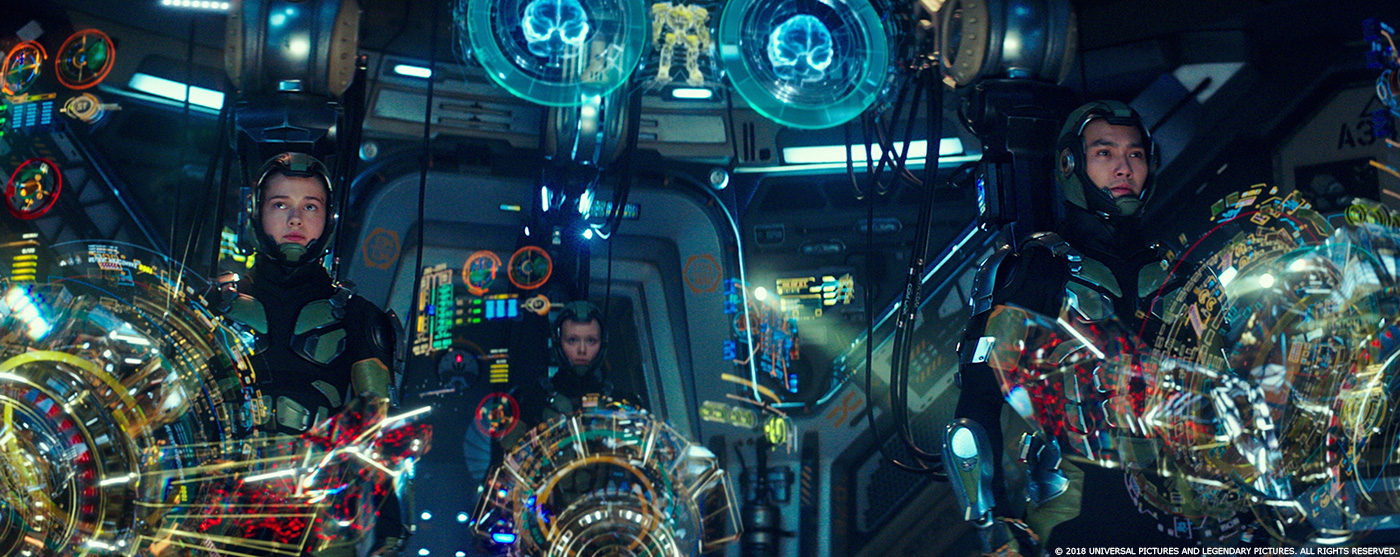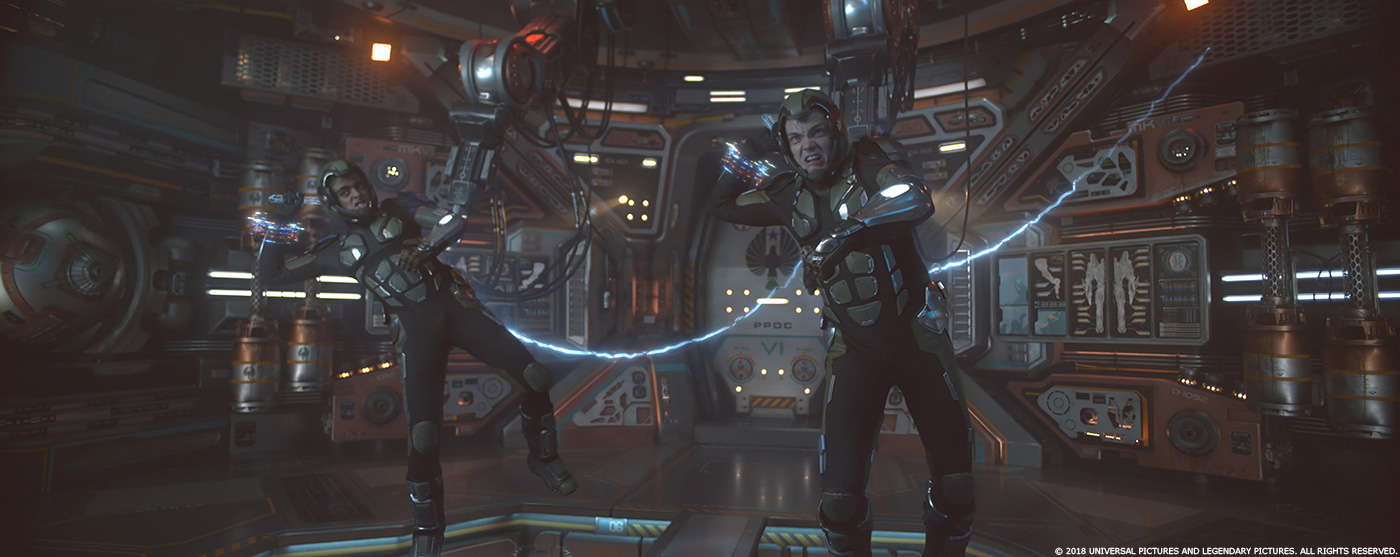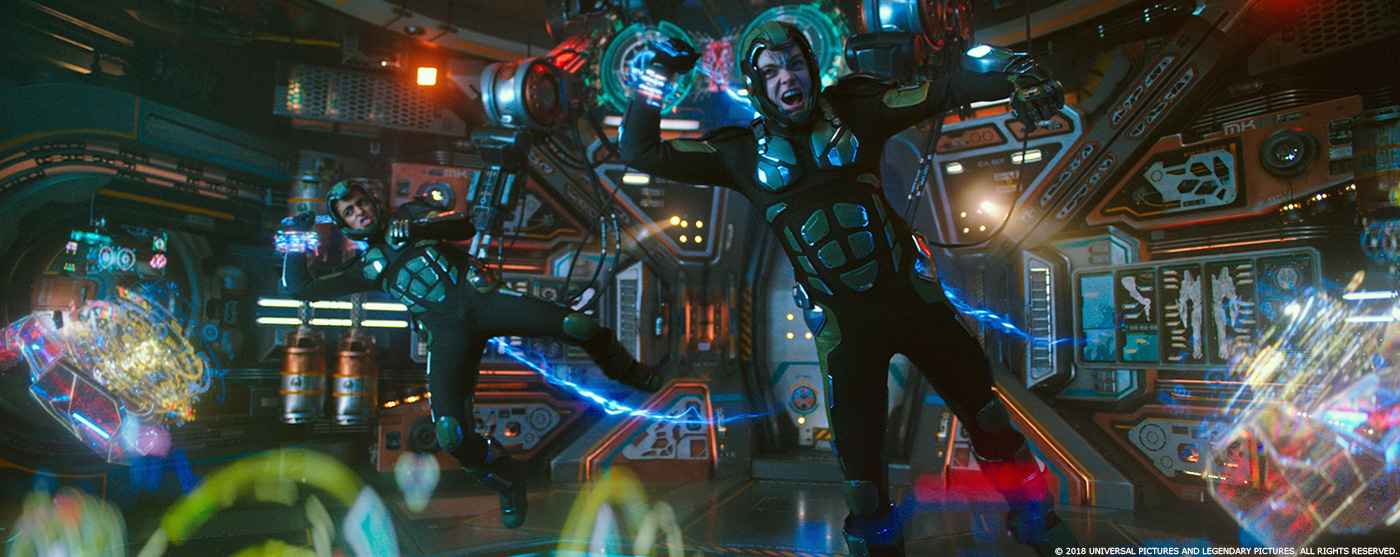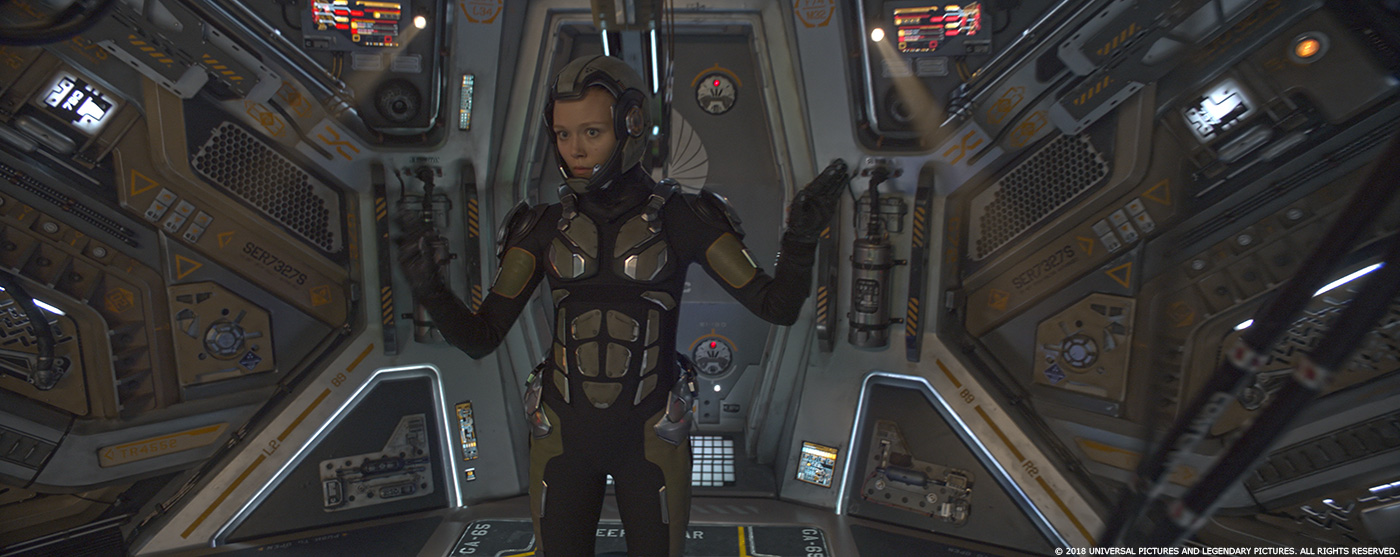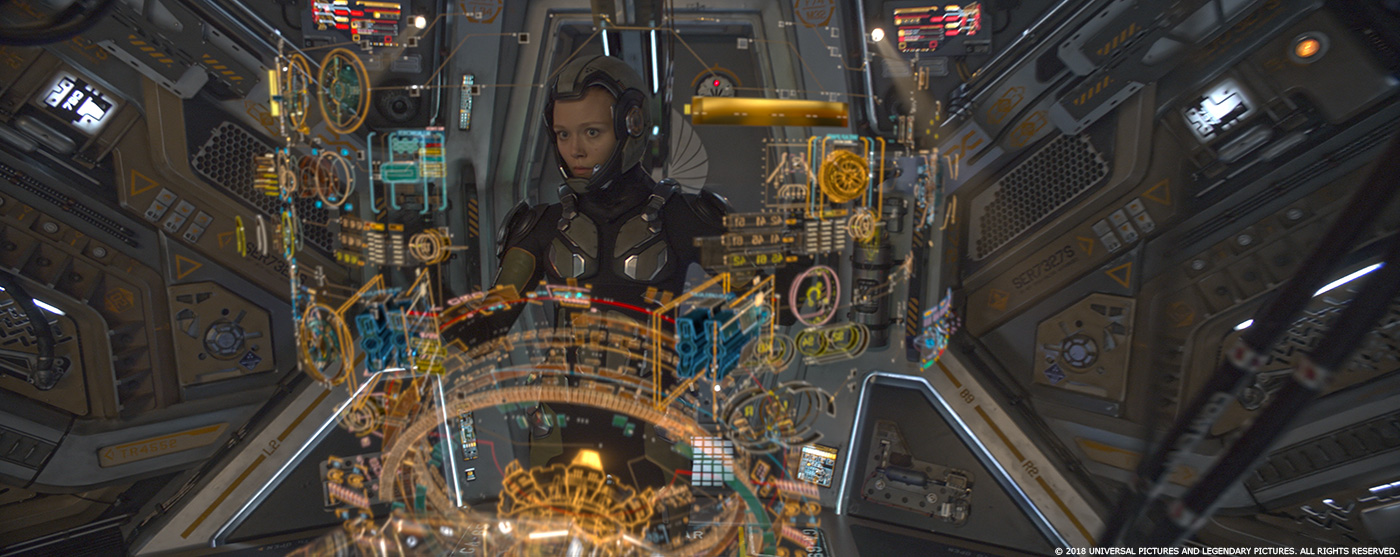After working for several years in various agencies and as freelance, Peter Eszenyi joined Territory Studio in 2012. He works on many projects such as GUARDIANS OF THE GALAXY, EX MACHINA, GHOST IN THE SHELL and BLADE RUNNER 2049.
What is your background?
I joined Territory in 2012 as Head of 3D and am now VFX Supervisor and Creative Lead. My credits include ZERO DARK THIRTY, GUARDIANS OF THE GALAXY, JUPITER ASCENDING, EX_MACHINA, AVENGERS AGE OF ULTRON, THE MARTIAN, MISSION IMPOSSIBLE 5, GHOST IN THE SHELL, BLADE RUNNER 2049, PACIFIC RIM 2.
How did you and Territory Studio get involved on this show?
Peter Bebb, VFX Supervisor from DNEG got in touch with us about creating the Jaeger control interfaces and display systems for a few other sets – supporting key storybeats with graphic VFX.
How was the collaboration with director Steven S. DeKnight and VFX Supervisor Peter Chiang?
We didn’t work directly with Steven, but had a great relationship with Peter Chiang and Peter Bebb at Dneg.
What was their approaches and expectations about the visual effects and the holograms?
For the design concepts we had a lot of conversations with Pete Chiang about the Jaeger controls and displays. He wanted more of a 3d layering of elements to achieve a volumetric quality. These were to be sharp, sophisticated and dynamic interfaces to support the advanced technological of the evolved Jaegers. Peter Bebb took us through the sequences and introduced us to the main narrative ideas, and outlined the best approach to make sure we did not veer off track in the design phase.
How did you organize the work with your VFX Producer?
This was the biggest project in terms of scale and budget to date, and it really proved that we are flexible and robust enough to adapt our pipeline to different clients’ specifications and requirements. Genevieve McMahon, our producer made sure that we worked in an efficient and scalable fashion and that meant we needed to flesh out our pipeline a bit. Our pipeline guys, Sean and Matt built new tools integrating Cinema4d, Maya and Nuke with Shotgun to allow us to export the finished files in very strict adherence to Dneg naming conventions so that they could assemble final comps with our Nuke scripts and rendered output files. Ashton Hertz, the production coordinator did a great job managing the day to day efforts, coordinating with the Dneg team.
Beside the first movie, did you receive specific indications and references for the holograms?
We had extensive meetings with Peter Chiang where he shared the design principles of the different Jaegers with us. There needed to be a clear distinction between Bracer, which is a mark IV and the rest of the new group, and we needed to take that on board for the holograms. Peter Bebb had this idea about what sort of evolution the holograms had in the years between the first film and the sequel. Ultimately we needed to reflect the different personalities and sophistication of each Jaeger through the design of these holographic ‘Connpods’.
Can you explain in details about the design and the creation of the holograms?
We started to concept Gipsy, trying to find a form that not only does the job of fitting into the Pacific Rim world but that feels functional. Besides the aesthetics, all sorts of human ergonomical constraints were incorporated into the designs. We explored quite a few routes into the shape language, which needed to be unique for each of the Jaegers, and explored ways of creating complexity and volume for the interfaces. We knew quite early on that everything needs to be volumetric, even physical from certain angles, and that helped us with finding the right shapes and materials. It really started to come together when we established the concept of having a central, roughly cylindrical core for the interfaces/cockpits and we built the different versions around that core. We created configurations based on the phase they needed to be in, for example when the pilots are fighting, the holograms move out of their way, allowing the pilots to move freely without clashing with the interfaces.
How did you work with Double Negative for some of the assets?
We liaised with Ian Simpson, Dneg’s DFX supervisor for the show. We received plates, distortion maps, bodytracks and cameras from them as well as the occasional asset for the jaegers, kaijus or some environmental assets. We did our own comps in house, led by Jason Halverson, who worked as a comp supervisor with us on this show. He established a look and created templates that the comp artists could use as a starting point. With the help of Ricardo Musch they built a Nuke script that worked as a minicomp that needed to be “plugged in” into the main shot comp. So we handed over our nuke scripts as well as the rendered exrs, including a lot of aovs for them to be able to tweak things at their end as well.
Can you tell us more about their animations?
Peter Chiang was really clear from the get go that the elements of the interfaces/cockpits need to feel alive, so we made sure that most of the elements as well as the main “bodyparts” of the interfaces are animated. The idea was that this is a hyper-flexible system and that is constantly adapting to the needs of the pilots as well as pre-emptively configuring itself to be the most ergonomical version of it.
How did you handle the animation of so many elements?
On some shots we hand keyframed almost all the elements, on others we created little loops and referenced those.
Can you tell us more about the difficult work of colors and transparency?
We spent a lot of time with the Dneg team to find the right materials and shaders for the interfaces. They needed to be almost transparent from the front, but appear almost solid from the opposite angle. As for the colours, the brief was that there needs to be a clear difference between Scrapper’s vibrant, joyful colour scheme and the more utilitarian full scale Jaegers. On top of that, we needed to make sure that the audience knows what Jaeger they are seeing by the form and colour palette, plus we needed to match the colour language of the exterior.
How did you help the cast and crew on-set to visualize the various holograms?
We received the plates, so the actors movements were already “baked in”, and it was a fun little challenge to make sure the elements line up with their hand movements as well as fit into the overall design.
Can you tell us more about the light interactions?
We had hdri spheres from the set, so we used that as the base, and had quite a few little lights floating around doing shot specific little accents. We rendered out a full reflection pass that was layered into the comp and we could tweak that in post to make sure the amount of reflection is the right one for the shot.
How did you adapt your holograms assets for the stereo conversion?
Dneg took that task, we gave them as many aovs as possible to help with that.
Which sequence or shot was the most complicated to create and why?
One of the Sidney shots was picked as a lookdev shot early on, and that was a long one, with a camera moves that goes almost completely around the set. We did quite a few versions of that shot, establishing how the animation, light, the form language comes together to create something cohesive.
What is your favorite shot or sequence?
I like the shots in the final battle, it is a really intense sequence.
What is your best memory on this show?
Working with Peter Chiang and Peter Bebb, working with the very helpful Dneg crew and last but not least the incredible team at Territory, they did an excellent job on this huge show. I remember the excitement of the guys standing around a computer waiting for the first trailer to be online!
How long have you worked on this show?
8 months – from June 2017 to early January 2018.
What’s the VFX shots count?
280 shots ended up in the film, but we worked on concepts and many many more that were omitted or placed on hold as the edit evolved drastically over our 8-month involvement
What was the size of your team?
We had a core team of 15 but got up to 30 artists at the peak busy time
What are the four movies that gave you the passion for cinema?
ET, the first INDIANA JONES, 2001: A SPACE ODYSSEY and THE RIGHT STUFF.
A big thanks for your time.
// WANT TO KNOW MORE?
Territory Studio: Dedicated page about PACIFIC RIM: UPRISING on Territory Studio website.
© Vincent Frei – The Art of VFX – 2018


